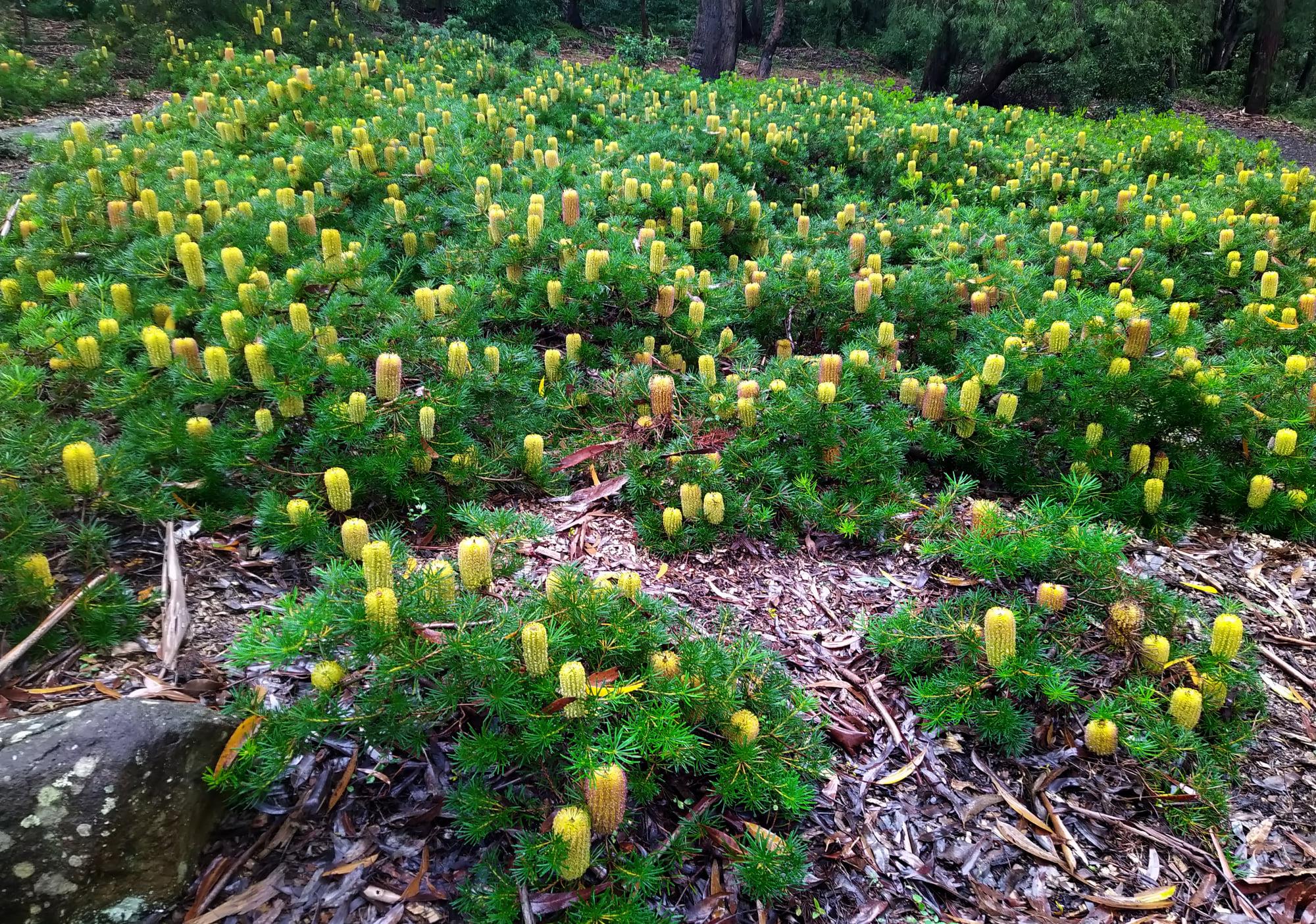Gondwanaland Still Blooms
Hairpin Banksia, hand colored engraving, James Sowerby 1757-1822 (credit: Wikipedia)
The genus Banksia is a remnant of the flora of Gondwanaland, the super-continent that broke apart 60-80 million years ago into Africa, India, Antarctica, Madagascar, New Zealand and Australia. These woody shrubs can be found as a ground cover to nearly the size of small trees. The Banksias are endemic to Australia where over 170 species, many highly restricted to remote habitats. The native plants are important food sources for Australian birds, many now endangered as landscapes have been converted to other uses. Here is one beauty, the Hairpin Banksia (Banksia spinulosa) from southeastern Australia. Cultivated selections are often referred to as 'bush candles'.


Hairpin Banksia (credit: AUS Native Plants Soc.) and B. spinulosa cv. Bush Candles (credit: Illawarra Grevillea Park)
Like so many things about the Land of OZ, Australia's Banksias are unique and strange. A short video presents some of the endemic Banksias from Western Australia which many people wish to grow in their home landscapes. The flowering plants of Gondwanaland must have been very beautiful. WHB